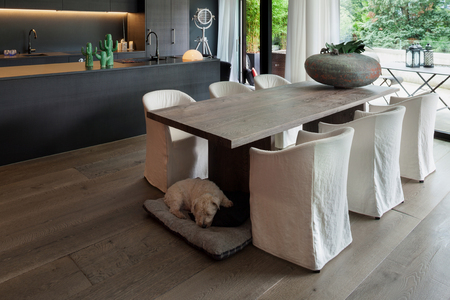Just like stones, there is a hardness scale for wood species. By comparing the different levels of hardness, you will be able to discover the different types of hardwood that meet your specific criteria. The Janka Wood Hardness Scale is a universal system that ranks a wood’s hardness off of its “resistance to indentation.” To dive deeper into the topic of wood hardness, we will use the Janka Wood Hardness Scale as a reference point. Let’s take a look at everything you need to know about a wood’s hardness:
Durability. Just because the scale states the hardness of the wood, does not mean that it is comparable to the wood’s durability. You will need to take into consideration other aspects of the wood like the thickness, protective finish, and even core layers (engineered wood).
Soft Woods. Softer woods have the potential of being scratched, dented or damaged. For active households, these woods may not stand a chance against children and pets.
Installation. Extremely tough hardwood species can be challenging to install. Their hardness may require more time and certain tools. For example, your exotic hardwoods are particularly hard.
The Median. Red Oak stands at the middle of the hardness scale at 1290. When comparing your wood species, Red Oak is the perfect medium because it is not too hard for sawing and nailing and not too soft for denting and scratching.
Recommendations. Now, you may be wanting a specific recommendation for active households. Often, the top suggestions are Red Oak, White Oak, Maple, and Hickory. These are ideal for busy households because they withstand everyday wear and tear while being more affordable.
For more information on hardwood floors and to view our selection online, please visit here. If you would like to speak with a sales associate, please call or visit one of our locations. We look forward to working with you!


Leave a Reply